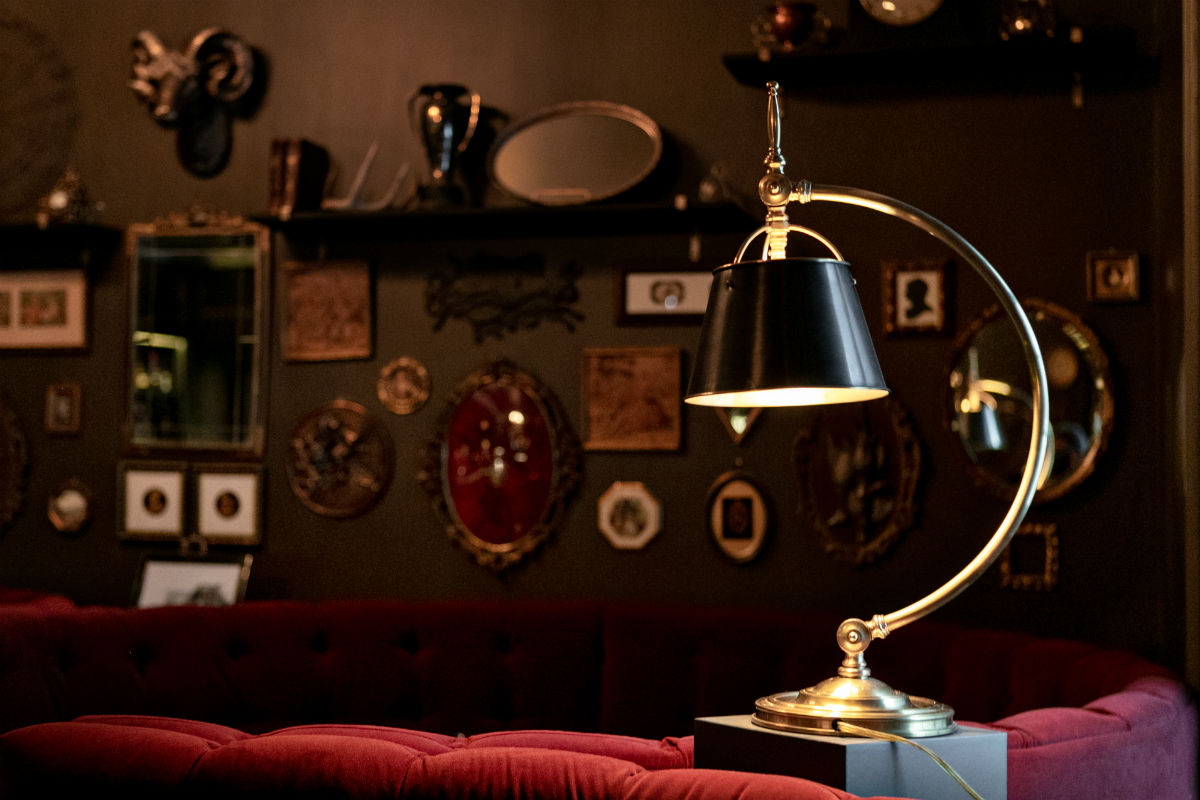At Shea, we pride ourselves on staying on top of what’s happening in design news. It helps us keep tabs on what’s fresh, inspiring, and happening in the world—and we make a few headlines of our own, too. Here are some recent articles delving into design, experience, and what’s buzzing in our community:
“Front of the House Lighting” – Restaurant Development + Design:
Good lighting is absolutely imperative to front-of-house restaurant design, and this piece dives into the basic must-knows. Lighting is totally dependent on the type and style of restaurant, and this story breaks down the requirements for different areas of a restaurant, as well as the importance of decorative versus functional pieces. Restaurant Development + Design also talks color and temperature of lighting, and how that can impact the dining experience, along with, of course, the aesthetics and trends that can help create a brand message in a physical space.
“Menu and Name Details for Ann Ahmed’s Third Restaurant, Khâluna” – Shea:
The latest news on Shea-designed Khâluna in South Minneapolis, including details on the name and a menu preview.
“‘We Space,’ The Destination Office, and More Design Expectations for the Year Ahead” – Work Design:
Work Design discusses a recent report on workplace trends for the coming year. First, workplaces will become more decentralized, with many main offices serving more as a “cultural meeting hub” rather than a sit-and-work space—meaning design will be key in helping companies entice employees back with clever “we” spaces, hospitality-style office buildings that are richer than ever in amenities, and a focus on worker comfort and wellbeing, with more emphasis on outdoor space and the best acoustic and lighting technology. The reorganization and repurposing of workspaces will be key for design firms, keeping in mind that lower-density offices also allow for more flexibility.
“This is the Restaurant of the Future” – Architectural Digest:
Hospitality pros share their takes on what’s coming next in restaurant design as the industry works to bring back the fun of the dining-out experience. Creating a sense of communal intimacy, where people are distanced from one another but intimate in their small groups, will help bring back that buzzy energy. And experiences will be more important than ever after people have been deprived of them. The reimagination of outdoor dining has made it a permanently important feature in restaurant design, employing imagination to activate all different outdoor spaces. Built-in, well-considered partitions (with millwork, curved booths, and more) have taken the place of plexiglass to help people feel safe while still bringing a design element, and creating intimate ambiance with lighting is more important than ever.
“Shea-Designed StormKing Brewpub & BBQ is North Loop-Bound” – Shea:
All the news on StormKing’s long-awaited return to Minneapolis, and the new partnership with Rapid Brewing Co.
“Stimulating Biophilia Through Corporate Interior Design” – Work Design:
Biophilia was a big trend even before the pandemic, and its benefits have just been further touted by the ongoing COVID-19 saga. Biophilic design will be more popular than ever as companies return to their offices—it’s defined as a way to “increase occupant connectivity to the natural environment through direct nature, indirect nature, and space conditions,” and has benefits that include employee wellbeing, productivity, and creativity, showing that the spaces in which we spend time have definite physiological and psychological impacts. Work Design dives into how it can be brought into the corporate workplace through a variety of senses and in both small and large ways—from artwork to greenery to natural features, depending on a client’s budget and willingness to explore more creative options.
“Dining and Entertainment: Where Do We Go From Here?” – FSR:
This piece looks at where the “eatertainment” concept will go post-pandemic. Before 2020, retail developments were embracing the notion of combining dining with interactive experiences, and this will continue in the future as developments try to mix tenants to create a blend of “live, work, shop, and play.” Delivering experiences post-pandemic will be crucial as people are looking to get out with friends in a way that can’t be replicated virtually—with new brands emerging and embracing technology to even draw in those who aren’t comfortable gathering in their spaces. But this story predicts a light at the end of the tunnel, with a “Roarin’ 20s” vibe taking hold once vaccinations are widespread as people are desperately looking for fun and good energy.
Offices and Healthcare Have Been Upended by the Pandemic. Here’s How They’ll Look in the Future” – Fast Company:
Based on a Gensler report, Fast Company dives into how offices and healthcare will be impacted by the events of 2020. Many offices will go to a hybrid model of part-time remote and part-time office work—meaning flexible space, with rooms that can be subdivided or expanded as needed. Office environments will also need to strive to provide social and interactive opportunities for employees, and embrace wellness as a core design tenet. In healthcare design, many experts predict a redistribution of real estate and a focus on life sciences merging with traditional healthcare spaces.
“Private Dining” – Restaurant Development + Design:
Private dining spaces are more important than ever to restaurants looking to bring in any kind of group right now, and Restaurant Development + Design looks at how a handful of restaurants have upped their game recently. A well-designed private space allows restaurants to boost revenue by bringing in planned group with limited menus, ingredients, and staffing, lowering overhead costs, and can be touted as a spot for group celebrations, large-group dining, or business functions and meetings—and can be used as overflow seating for the regular dining room when not in use for events. This is why it’s important to create spaces that blend aesthetically with the rest of the restaurant, but have some special points of distinction that make them feel intimate and special. Acoustics are especially important in private dining rooms (you want some restaurant energy to filter in, but they’re private for a reason), and taking operations into consideration is important for designing a functional PDR.
“A New Generation of Restaurants” – Shea:
An updated How We Create piece discussing the pros and cons of opening a restaurant in a second-generation space—what questions to ask, what considerations to take, and how it can be most efficiently done.
March 5, 2021
Shea Links: March

